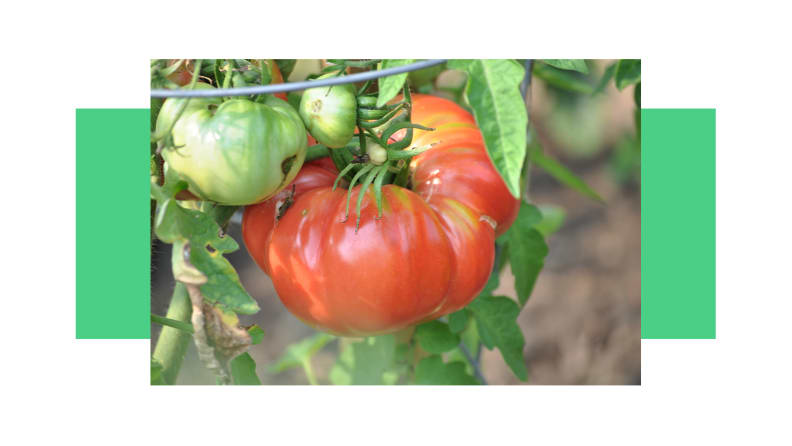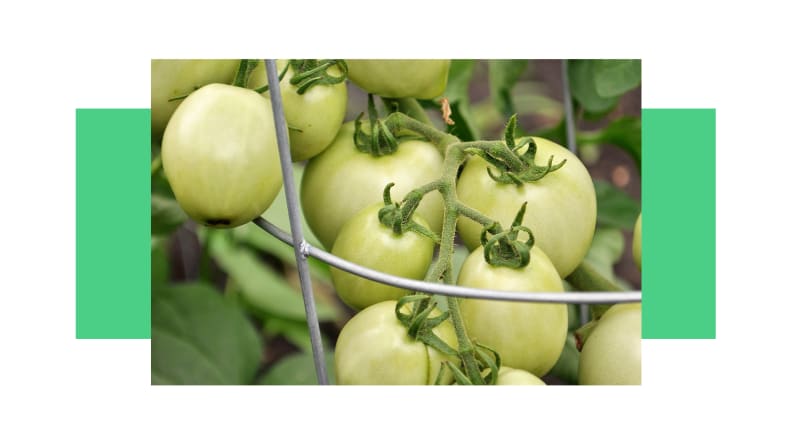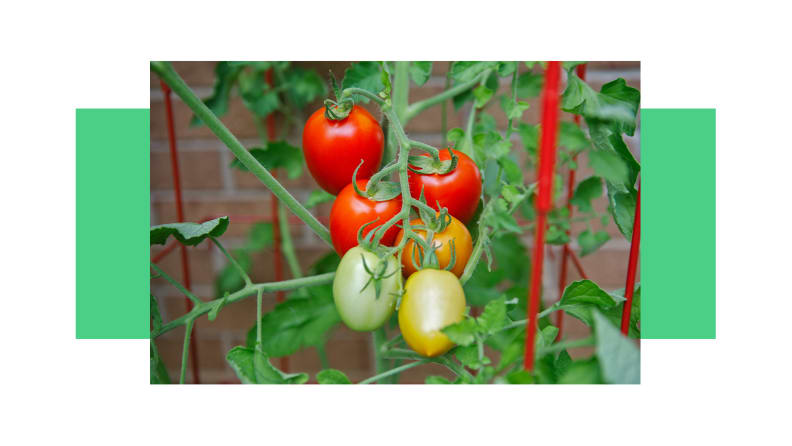 — Recommendations are independently chosen by Reviewed’s editors. Purchases you make through our links may earn us a commission.
— Recommendations are independently chosen by Reviewed’s editors. Purchases you make through our links may earn us a commission.Tomato cages are a fast, easy way to support your tomato plants and keep them healthy. Although they sound like something you’d see in a zoo for vegetables, tomato cages are actually a way to keep your tomatoes from flopping over onto the ground, where it’s easy for garden pests like bugs and rodents, as well as diseases, to attack your tomatoes.
What are tomato cages?
Tomato cages are frames made of wire or steel that surround and support a single plant. They’re trellises that enclose a tomato plant. Tomato cages take on several forms: cones, three-sided, or square trellises. Some tomato cages have adjustable heights, so you can extend them as your plants grow, and some can fold flat for storage without disassembling the entire cage.
Get the 47-in Powder-Coated Galvanized Steel Wire Square Tomato Cage at Lowe's for $13
Get the Growsun Large 5-foot Tomato Cage 5-Pack on Amazon for $50
Get the Gardeners Supply Company Lifetime Tomato Cages Plant Stand (Set of 4) on Amazon for $65
Why use a tomato cage?

Tomato cages promote healthy, upright growth.
Tomato cages keep tomato plants and fruits off the ground. For some types of tomatoes, tomato cages are all you need to support your plants from planting through harvest.
In most gardens, tomatoes grow much, much better if the vines and fruit are vertical, not horizontal. Without supports, tomato vines will naturally grow along the ground; tomato vines aren’t strong enough to stand upright by themselves.
Think of tomatoes as bags of wet sugar. If they’re lying on the ground, they’re easily accessible to every creature from slugs to racoons. Most critters in your yard won’t wait until your tomatoes are ripe to dig in.
Supporting your tomato plants with a tomato cage allows more air to circulate around your tomato plants, helping to prevent common tomato diseases. Tomato cages also help reduce sunscald (sunburn), which is a condition where parts of tomatoes turn soft and rot due to excess sun exposure. Tomato cages keep your tomato vines growing up and over tomatoes, shading the plants’ fruit with their leaves.
It’s also easier to pick tomatoes growing in a tomato cage that’s at waist- or shoulder-level instead of digging around in the dirt trying to find the one tomato that hasn’t been nibbled by mice.
Related content
How to choose a tomato cage

Choosing the right tomato cage depends upon your size expectations.
The type of tomato cage you need depends on the variety you're growing. Tomato varieties fall into one of two categories: determinate or indeterminate.
Determinate tomato plants grow to size and produce all its fruit at once—typically early in the season. Varieties like Roma paste and Bush Goliath are examples of determinate tomatoes. Choose a sturdy cage that’s 3-feet to 4-feet tall and wide enough to support long branches extending from the main stem.
Indeterminate tomato plants continue growing throughout the season until killed by frost or disease. These are also known as “vining” tomatoes, like the beefsteak variety, and can grow 6-feet tall. An extendable cage gives vining tomato plants plenty of room to grow.
If you’re growing tomatoes in patio plants or are using small in-ground plants, a 33-inch tomato cage (or similar size) will offer the right amount of support without taking up too much space. Since these cages are narrower at the base, it can take some finagling to sit it straight up in the soil. This isn’t a problem which won’t bother your plants, but may bother visually-oriented gardeners.
For larger tomato plants in pots or raised garden beds, square cages have a wide base and plenty of points of support to encourage healthy growth.
How to install a tomato cage

Remember to keep a watchful on your sprouting tomato plants as they grow.
For determinate tomatoes, push your tomato cage into the soil around your plant as far as you can, leaving plenty of space around the stem so you don’t damage the plant.
The cage’s crossbars support the tomato plant’s side branches, helping to avoid breakage to the stem. On occasion, prune the suckers, the little stems that grow at a 45-degree angle between the main stem and the branches, to improve airflow and prevent disease.
Indeterminate tomatoes grow in a similar fashion, but need added support throughout. Being mindful of the roots, push the cage around the plant. Use gardening twine to secure the main stem to the cage for additional support. Alternatively, plant clips can also help support your tomatoes and you can continue to add more as the plant climbs upward.
Make sure to prune the suckers off of indeterminate tomato plants regularly (or clip them to the cage). Otherwise, the extra weight on the tomato vine branch can make the branch break off, dooming your unripe tomatoes.
Only use one tomato cage per tomato plant. Remember that tomatoes need air circulation to stave off fungal and bacterial diseases, which means single living in tomato cages—no pairing up allowed.
At the end of the season, clean your tomato cages before you put them away. Wipe them down with rubbing alcohol or antibacterial wipes to kill plant diseases that could overwinter on your cages, especially in corners or joints.
Harvesting tomatoes from tomato cages
Twist the tomato off where the individual tomato’s stem meets the vine. If they look slightly green, don’t worry - tomatoes can ripen off the vine as long as they’re at least pink on the blossom (bottom) end and they’re held at temperatures above 55 degrees Fahrenheit. One trick is to place the tomatoes in a paper bag to speed up the ripening process.
But if it’s high summer and your tomatoes are ripe all the way through, don’t wait to take them off the vine. Harvest them at least every other day and make some soggy sink sandwiches.
Sign up for our newsletter.
Enter your email:
The product experts at Reviewed have all your shopping needs covered. Follow Reviewed on Facebook, Twitter, Instagram, TikTok or Flipboard for the latest deals, product reviews, and more.
Prices were accurate at the time this article was published but may change over time.



